The Castillo de San Marcos: More Solid Than a Rock
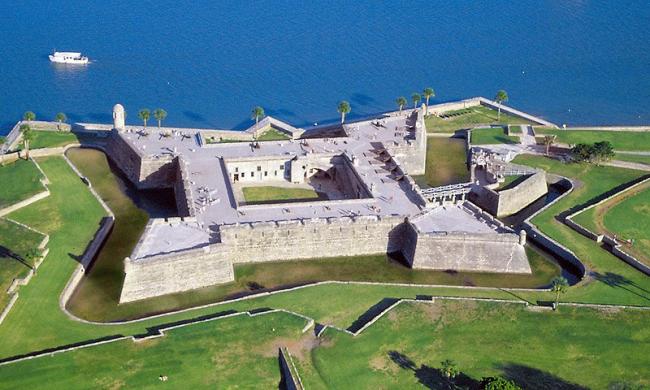
St. Augustine’s Castillo de San Marcos has seen fifteen battles and two sieges without a defeat and has withstood almost 350 years’ worth of rain, floods, and hurricanes. What accounts for the success and longevity of this oldest masonry fort in the U.S.?
One word: Coquina.
Spanish for “tiny shell,” coquina is the local shell stone from which the Castillo is constructed. It is a type of limestone in which shells have been layered on top of each other for millennia and then glued together by slightly acidic rainwater’s dissolving the calcium carbonate in the shells. It is found in few other places in the world, which is why there is only one other coquina fort besides the Castillo, at Fort Matanzas 14 miles south of St. Augustine.

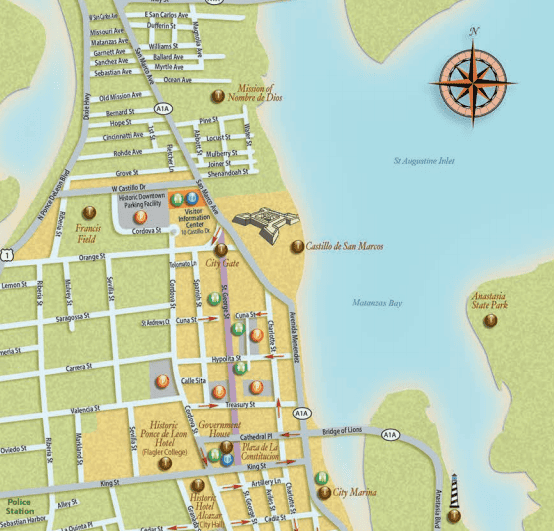
When the Spanish first settled St. Augustine in 1565, they built their forts of easily-accessible wood, but as the British presence in the Carolinas became more menacing, the Spanish decided they needed a more sturdy structure to guard St. Augustine, this city largely responsible for protecting Spanish shipping along Florida’s coast. Construction of the Castillo began in 1672 using coquina, the only stone available in northeast Florida, quarried from present-day Anastasia Island (see map). Since no one had ever built a fort (or any large building) of coquina, the Spanish had no idea how strong this light, porous material would be. As a precaution, they built the walls an average of twelve feet thick with more vulnerable areas as much as nineteen feet thick!
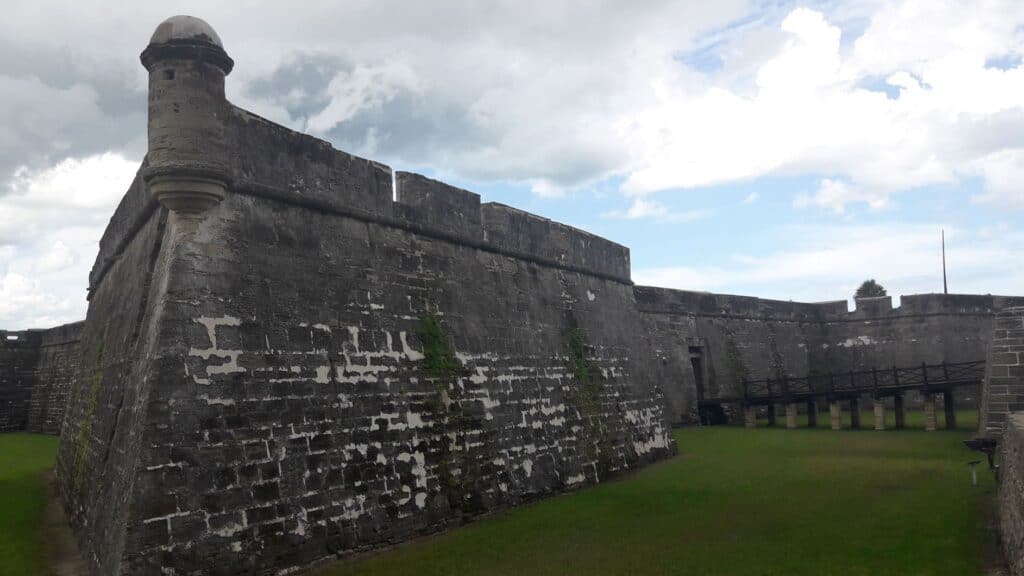
Construction ended in 1695, just in time for a 1702 British siege under Governor James Moore of Charleston. He captured the town and fired on the Castillo from nearby houses but was surprised by the result of his bombardment. The coquina didn’t shatter as brick or stone would. Its microscopic air pockets made it compressible even against gun and cannon fire, which meant Moore’s cannonballs bounced off the surface or sunk into the walls, “as though you would stick a knife into cheese,” the British lamented. Even when General Oglethorpe besieged the town for 27 days in 1740, he had no better luck. The coquina fort was a roaring success!
The fort’s use of coquina is not the only reason for its victories. Here are some other contributing factors:
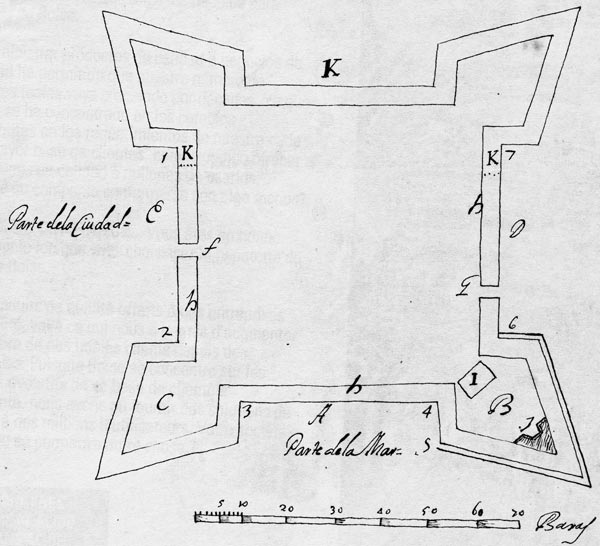
Photo credit: www.visitstaugustine.com
Bastion System
The fort’s plan is based off a 15th-century star-shaped design first developed in Italy and known as the “Bastion System,” named for the projecting diamond-shaped formations added onto fortress walls. These new defensive structures were meant to withstand or even avoid the impact of the new warfare technology of cannon fire. The increased surface area of bastions also allowed the Spanish to shoot their cannons from many different angles, creating a crossfire upon their attackers.
Spanish Ingenuity
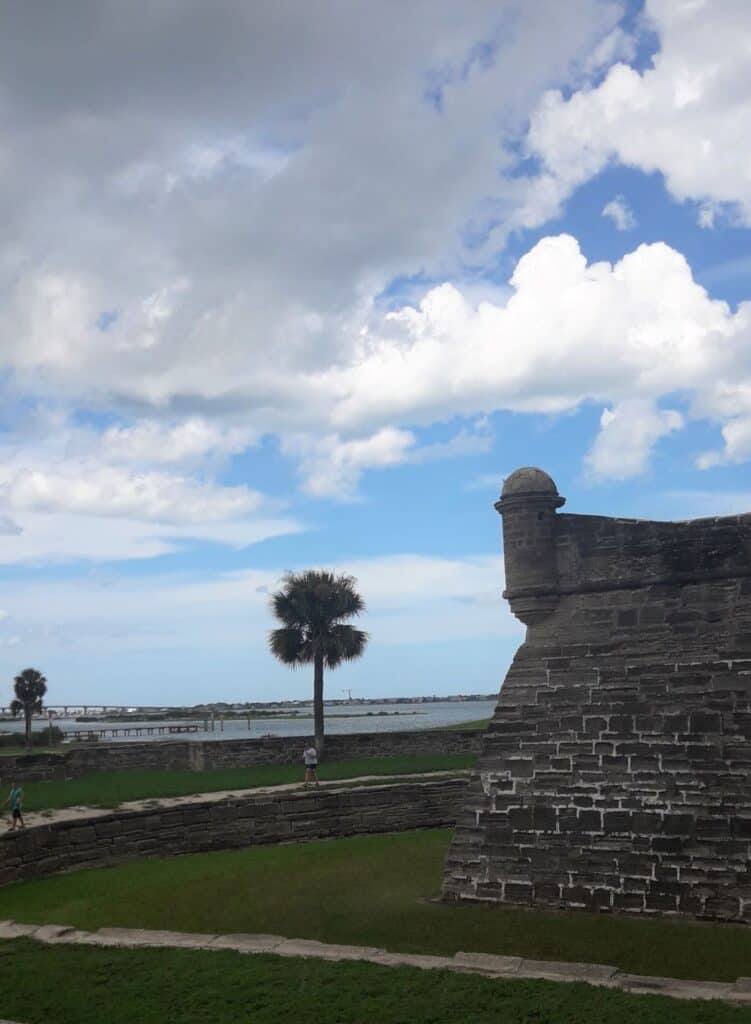
A fun anecdote about the Spanish defense of the fort takes place during Oglethorpe’s 1740 siege. The British, stationed across the bay, repeatedly struck the Castillo with their cannonballs. However, on looking at the fort’s walls the next morning, they were surprised to find the cannonball holes had disappeared and exclaimed, “It appears the walls heal themselves!” In fact, overnight the Spanish had filled the holes with plaster and painted over them with the same white paint as the rest of the walls so it appeared the British had done no damage at all! It was partly due to this “psychological warfare” that the British eventually lifted their siege and returned north.
When giving tours of the Castillo to elementary school students, I often refer to the coquina as a “magical stone” because it repelled enemy fire so miraculously, but the truth is it wasn’t just the coquina that accounted for the “magic” of this fort. The soldiers’ cleverness along with the fort’s ingenious construction contributed to its victories so that it remains a well-preserved monument even today. Next time you visit the fort, take a close look at the incredible coquina composed of its tiny shells and search for the cannonball and bullet holes still visible in the outer walls!
Visit the fort on our Jewels of the South in 9 Days Tour!
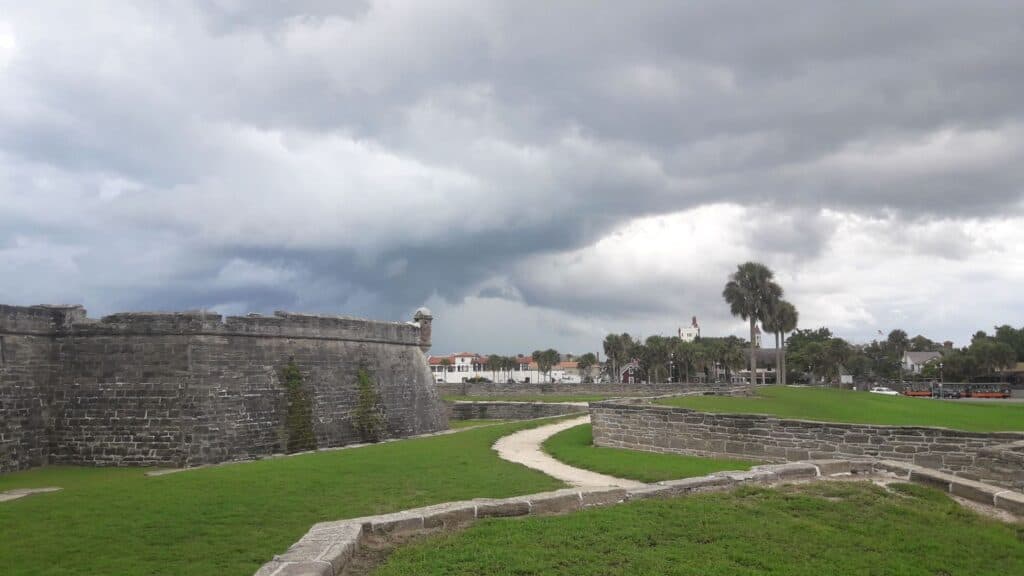
Enjoy a tour of the Castillo de San Marcos on our Jewels of the South in 9 Days Tour!
Visitor Information:
The fort is currently closed due to COVID-19, but its normal hours are listed below.
Open every day but Thanksgiving and Christmas Day
First admission: 9:00 a.m.
Last admission: 5:00 p.m.
Closure: 5:15 p.m.
Cannon firing reenactments can be viewed Friday, Saturday, and Sunday at 10:30 a.m., 11:30 a.m., 1:30 p.m., 2:30 p.m., and 3:30 p.m.
Adults (16+): $15.00 – valid for 7 consecutive days
Children (15-): Free but must be accompanied by an adult
The Golden Access and Age Passports; the Castillo Annual Pass; and the Interagency Access, Annual, Military, and Senior Passes are honored for free admission in accordance with the terms specified on the card.
Parking: The City of St. Augustine parking lot in front of the Castillo costs $2.50 per hour, paid at automated stations which accept most denominations of U.S. coin and currency as well as credit and debit cards. There is also a city parking garage a block away from the Castillo.


